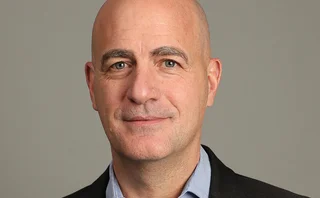
Risk Awards 2024: The winners
JP Morgan wins derivatives house, lifetime award for El Karoui, Barclays wins rates

UK primary dealers found themselves in a tough spot last year when the Debt Management Office scheduled the sale of £4.5 billion ($5.7 billion) of green gilts for September 28 – just three working days after a new government was due to outline its budget plans.
Markets were already jittery about prime minister Liz Truss’s promises to cut taxes and increase spending, nudging gilt yields higher.
Despite the risks – which would later materialise in dramatic fashion – Barclays put its hand up to act as duration manager for the deal.
Tarun Mathur, co-head of European rates sales at Barclays, says the question the bank asked itself was: “If not us, then who?”
Stepping up when it really mattered was a recurring theme in this year’s Risk Awards.
JP Morgan landed the overall award for derivatives house for its response to the US regional banking crisis in March 2023. The US banking giant arranged billions of dollars in financing and interest rate hedges for dozens of smaller lenders that were caught up in the panic, preventing a potential cascade of failures.

In a previously unreported deal, JP Morgan acquired a multi-billion-dollar portfolio of revolving credit lines from a troubled regional lender, and transferred much of the risk to a private investor via a synthetic securitisation. “That deal probably enabled one fewer bank to fail,” according to a source familiar with the transaction.
JP Morgan’s equities business took the lead in executing that deal, while its credit unit was widely praised for providing liquidity in bank bonds and credit default swaps – including those of Credit Suisse, in which it had a market share of 35% – at the height of the crisis.
Gilt-y pleasures
Barclays – Risk.net’s interest rate derivatives house of the year – ended up at the centre of gilt flows on September 28, 2022, confounding expectations by coming out of one the most volatile trading days on record in the black. That served as a springboard for the business, solidifying its status as the top player in sterling markets, and setting the stage for major gains in Japan and the US in the months that followed.
Other winners also showed their chops when the going got tough.
When Schroders launched its first liability-driven investment (LDI) products in 2006, it also built an automated system to manage collateral requirements. That gave the firm a first-mover advantage during the UK gilt crisis, enabling it to raise cash by trading out of positions before others started dumping assets. Schroders also used corporate bond repos to meet margin calls where possible, saving one client an estimated £20 million.
Risk.net’s hedge fund of the year, GoldenTree Asset Management, snapped up beaten-down collateralised loan obligations (CLOs) during the UK gilt crisis, and was also a big buyer of European bank bail-in bonds after Credit Suisse collapsed – a trade that ultimately netted the firm more than £100 million in profits.
Taking the hike
Heightened rates volatility was a boon for CME’s exchange business, which reported record volumes in Treasury futures. The task of managing the risk of those trades fell to the group’s clearing unit. While some US Treasury futures contracts have seen as many as nine margin hikes over the past two years – with aggregate requirements increasing by two-thirds since last summer – this was done smoothly, without destabilising the market. The largest one-day aggregate increase was 3.2%, in March, less than half of the largest one-day hike in 2020.
“They’re very thoughtful around the changes that they make within their margin frameworks,” says a clearing executive at a large bank.
But the simultaneous rise in rates and volatility caused problems elsewhere. Standard models used to price interest rate options assume the correlation between volatility and the underlying asset is always negative, or at most zero. This year’s combination of rising rates and higher volatilities upended those assumptions. Artur Sepp, Risk.net’s quant of the year, solved the problem by extending an equity derivatives paper he co-authored in 2012 to account for the correlation between rates and volatility.
The maths master
This year’s lifetime achievement award goes to Nicole El Karoui, a pioneer of mathematical finance, and creator of the most influential master’s course in the field. The ‘DEA El Karoui’, as it is often called, has minted well over 1,000 graduates since it was launched in 1989. Many of these alumni have gone on to reshape the industry. They include Samuel Wisnia, who ran the strats group at Goldman Sachs and led macro trading at Deutsche Bank before joining Eisler Capital in 2018 as deputy chief investment officer. He credits El Karoui for encouraging him to ask questions, instead of just consuming knowledge, and for showing him how to use mathematics to solve problems. “She transformed me,” Wisnia tells Risk.net.
The same could be said for the wider industry. “The legacy is enormous,” says Lorenzo Bergomi, who hired more than a dozen of El Karoui’s graduates at Societe Generale, where he was head of equity derivatives research for more than two decades. “She was instrumental in building that ecosystem between academia and banks. One of the very few people – at least in France – who was able to bridge that gap.”
As always, picking the winners was extremely difficult. All candidates had to submit detailed information on their businesses, as a precursor to lengthy, off-record interviews. Shortlisted candidates were then subject to a due diligence phase, in which the editorial team spoke to each firm’s clients and other market participants.
The final decisions were made by Risk.net’s editors and journalists, weighing a number of factors, including risk management, creativity and innovation, liquidity provision, quality of service and customer satisfaction, and engagement with regulatory issues. Where decisions were tight, client feedback often helped settle the issue. The Risk.net editorial team thanks all this year’s participants for their time and help.
The full list of winners, along with articles explaining our choices, can be found below.
The Winners
DERIVATIVES CATEGORIES
Interest rate derivatives house of the year
Currency derivatives house of the year
Equity derivatives house of the year
Credit derivatives house of the year
Inflation derivatives house of the year
Structured products house of the year
RISK MANAGEMENT CATEGORIES
Credit portfolio manager of the year
Sovereign risk manager of the year
INVESTING CATEGORIES
Quant investment firm of the year
MARKET STRUCTURE CATEGORIES
OTC trading platform of the year
SERVICE CATEGORIES
Derivatives client clearer of the year
TECHNOLOGY CATEGORIES
INDIVIDUAL CATEGORIES
Only users who have a paid subscription or are part of a corporate subscription are able to print or copy content.
To access these options, along with all other subscription benefits, please contact info@risk.net or view our subscription options here: http://subscriptions.risk.net/subscribe
You are currently unable to print this content. Please contact info@risk.net to find out more.
You are currently unable to copy this content. Please contact info@risk.net to find out more.
Copyright Infopro Digital Limited. All rights reserved.
You may share this content using our article tools. Printing this content is for the sole use of the Authorised User (named subscriber), as outlined in our terms and conditions - https://www.infopro-insight.com/terms-conditions/insight-subscriptions/
If you would like to purchase additional rights please email info@risk.net
Copyright Infopro Digital Limited. All rights reserved.
You may share this content using our article tools. Copying this content is for the sole use of the Authorised User (named subscriber), as outlined in our terms and conditions - https://www.infopro-insight.com/terms-conditions/insight-subscriptions/
If you would like to purchase additional rights please email info@risk.net
More on Awards
Joining the dots: banks leverage tech advancements for the future of regulatory reporting
The continued evolution of regulatory frameworks is creating mounting challenges for capital markets firms in achieving comprehensive and cost-effectiveawa compliance reporting. Regnology discusses how firms are starting to use a synthesis of emerging…
Markets Technology Awards 2024 winners' review
Vendors spy opportunity in demystifying and democratising – opening up markets and methods to new users
Derivatives house of the year: JP Morgan
Risk Awards 2024: Response to regional banking crisis went far beyond First Republic
Best product for capital markets: Murex
Asia Risk Awards 2023
Technology vendor of the year: Murex
Asia Risk Awards 2023
Best structured products support system: Murex
Asia Risk Awards 2023
Energy Risk Asia Awards 2023: the winners
Winning firms demonstrate resiliency and robust risk management amid testing times
Asia Risk Awards 2023: The winners
All the winners of this year's Asia Risk and Technology awards







